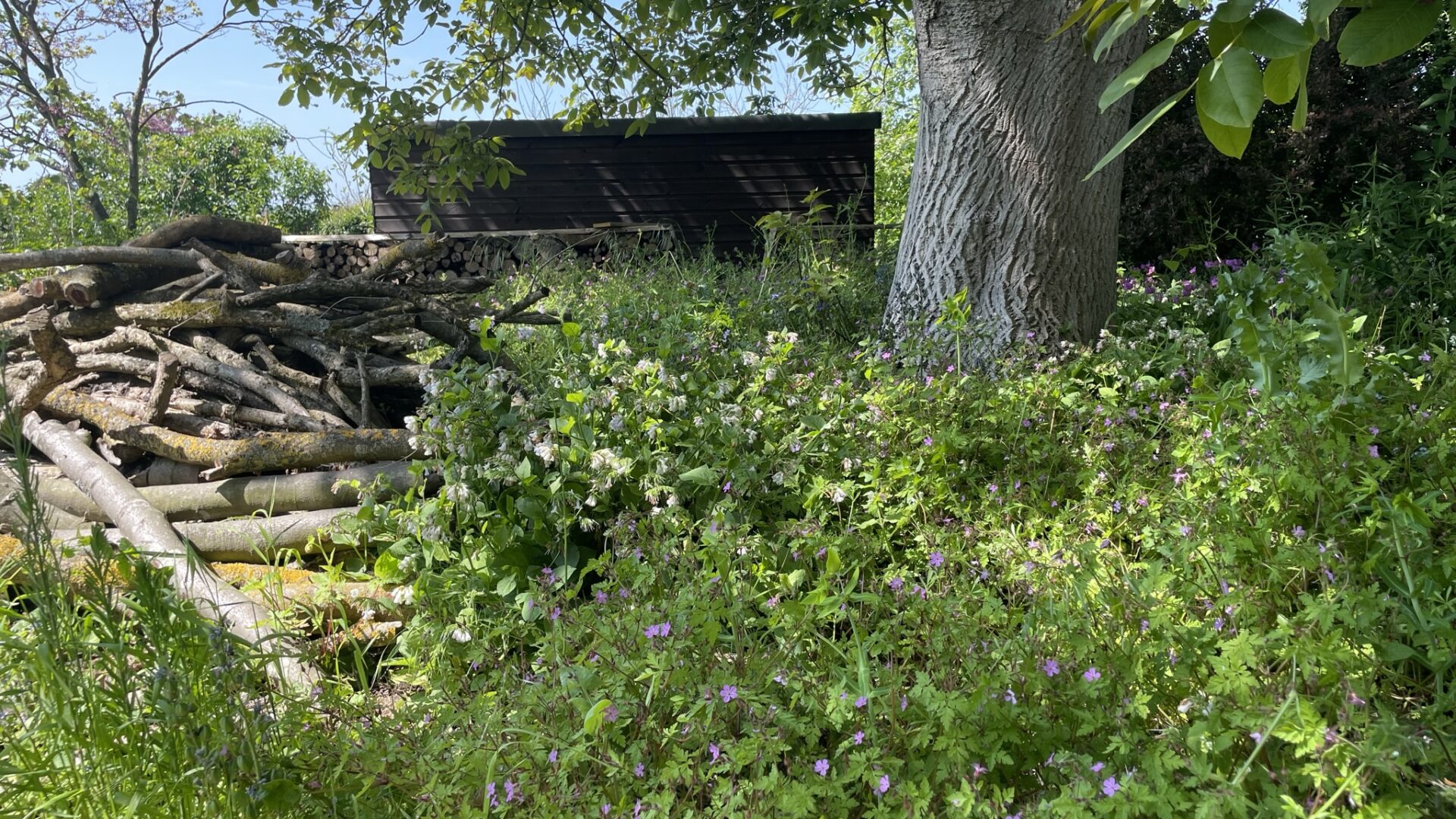
You don’t need me to tell you that rewilding is a hot topic these days. After all, Lulu Urquhart and Adam Hunt’s ‘A Rewilding Britain Landscape’ won best in show at Chelsea in 2022. Not only that, but when it comes to gardens, rewilding is becoming a front in the ‘culture wars’. But what does rewilding mean, and how does it interact with garden design?
Although the term rewilding was first coined in the 1980s, it is probably Isabella Tree’s 2018 book ‘Wilding’ which did most to catapult it into public consciousness. The success of this book in capturing people’s imagination is partly its dual nature. On the one hand, it is a personal story of the author and her husband as they struggle over twenty years to reshape their private estate. On the other, the book (perhaps like the landscape) reshapes itself as you read, into a passionate rallying cry for action. Its timing was also critical – it was already selling well, but lockdown catapulted its popularity, as we all dreamed of a deeper connection to the landscape and perhaps fantasised about a time when things were less complicated. This book was preceded five years earlier by Goerge Monbiot’s impeccably researched ‘Feral’, a brilliant, broad-reaching treatise on the damage we have done to the world, and how we can allow it to heal itself. It is this last point which is the key.
When I was training, the crucial word was ‘conservation’. Landscapes were maintained in a careful balance, to baselines within living memory. Often these landscapes were grassland, preserved by grazing. My mind was changed forever after a couple of stays at Knepp Estate, in Sussex. Here, scrubby woodland pasture was allowed to develop at will. ‘Scrub’ was a dirty word when I was at college – it was synonymous with uncared-for land. At the heart of this is an interesting concept – that land needs caring for. Monbiot argued for a widescale abandonment of many tracts of land to allow natural processes to ‘re-wild’ the land. It is these natural processes that are at the heart of the concept of rewilding. Unfortunately, we have killed off most of the mega-fauna in the UK (and many smaller animals as well) making this process more difficult. Bears, wolves, aurochs, wild boar, lynx, and beaver were all extinct in the UK by around 1700 or so (some much earlier)1. Wildcats, pine martens and polecats are existing only in small pockets. At Knepp, the lack of these mega-fauna means recreating their effects with a variety of ‘ancient’ livestock breeds. These animals in turn need to be culled to keep numbers under control.
As the American Environmental Historian Oliver Cronon points out in his 1995 essay2, to some extent rewilding is an oxymoron – if you argue for wilderness for its own sake, you’re still imposing a human point of view. Which is perhaps a good point to introduce gardens into the discussion. For gardens are all about human intervention – you cannot have a garden without a gardener (and vice-versa). So, would the best course for rewilding a garden be to simply abandon it to natural processes?3 But then in reverting to wild landscape, would it cease to be a garden?
Surely, this does not mean that there is nothing to learn (for gardens at least) from rewilding as a concept? Perhaps the best thing we can do is not to apply intervention to every corner of the garden. As we’re often told, untidy gardening is good for biodiversity – indeed this is what many ‘wildlife gardeners’ have been doing for years.
Of course, this does not mean that all human intervention is bad – we are part of nature, not apart from it. For better or worse, landscapes have evolved with us in the past few hundred thousand years. And at a garden-scale (or at any scale?), a multiplicity of environments creates more biodiversity. So while on the other side of my garden fence is a monoculture of maize grown for biofuel, my garden is for the moment a much more biodiverse space. And I can take solace in the fact that in my time-poor life, parts of the garden left to their own devices can only be a good thing. Whether one calls it rewilding or not doesn’t really matter.
This piece was first published as a point of view article in the Garden Design Journal in 2023
*Words by Chip Taylor, from the third verse of the Troggs 1966 hit ‘Wild Thing’.
Footnotes: